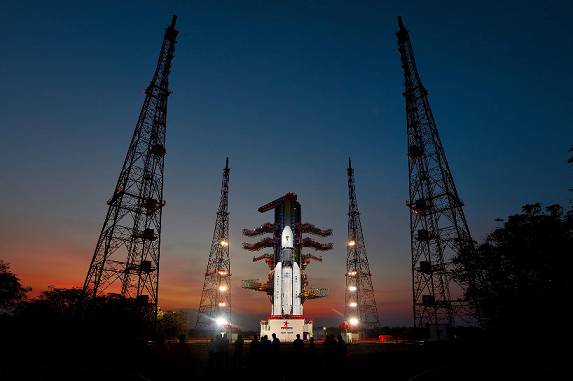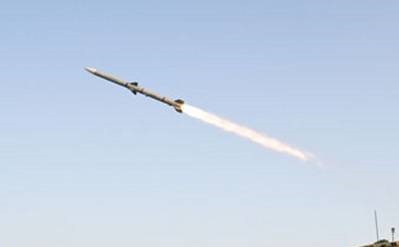
The fully integrated GSLV Mk III-D1 rocket carrying the GSAT-19 satellite at the launch pad ahead of its mission on Monday. An ISRO photo
CHENNAI (PTI): The over 25-hour countdown for the launch of India's heavy-lift rocket GSLV MkIII, carrying communication satellite GSAT-19, from the space port of Sriharikota began on Sunday, ISRO said.
The GSLV Mk III-D1 rocket is scheduled to lift off at 1728 hours (IST) on Monday from the second launch pad of the Satish Dhawan Space Centre at Sriharikota, around 120 km from Chennai.
"The 25-and-half hour countdown for the launch of GSLV-Mk III-D1, carrying the 3,136 kg GSAT-19 satellite, commenced at 3.58 pm (1558 hours IST Sunday), soon after the Mission Readiness Review Committee and Launch Authorisation Board gave the clearance," Indian Space Research Organisation (ISRO) said.
ISRO Chairman A S Kiran Kumar said the mission is important as "it was the heaviest ever rocket and satellite to be launched from the country".
"All activities for the launch of GSLV Mk III-D1 and GSAT-19 mission is going on. Tomorrow, we are expecting to launch at 5.28 pm," he told reporters at the Chennai airport.
On the significance of the launch for ISRO, he said, "It is an important event as we are putting our communication satellite from our own soil".
Till now, ISRO had to depend on foreign launchers for communication satellites weighing more than 2,300 kg. The GSLV Mk III-D1 is capable of lifting payloads of up to 4,000 kg into the Geosynchronous Transfer Orbit (GTO) and 10,000 kg into the Low Earth Orbit.
In Monday's mission, the vehicle is scheduled to launch the GSAT-19 into the GTO at 16.20 minutes after lift-off.
Earlier, ISRO had launched the 3,404 kg GSAT-18 communication satellite from European spaceport in French Guiana.
In 2014, the space agency successfully undertook the first experimental flight of the GSLV Mk III from Sriharikota.
The vehicle in a two stage flight (with a non-functional cryogenic upper stage) carried the Crew Module Atmospheric Re-Entry Experiment to the intended height of 126 km and re-entered the atmosphere safely.
The GSLV-Mk III-D1 is a three-stage vehicle with indigenous cryogenic upper stage engine designed to carry heavier communication satellites into the GTO.
Apart from the cryogenic engine, designated C25, carrying about 28 tonnes of propellants, it has two solid strap-on motors (S200) and a core liquid booster (L110).
The mission would also augment India's communication resources as a single GSAT-19 satellite will be equivalent to having a constellation of six to seven of the older variety of communication satellites in space.
At present, out of a constellation of 41 in-orbit Indian satellites, 13 are communication satellites, and the total mission life of the GSAT-19 is 10 years.
 Previous Article
Previous Article Next Article
Next Article








The Indian Air Force, in its flight trials evaluation report submitted before the Defence Ministry l..
view articleAn insight into the Medium Multi-Role Combat Aircraft competition...
view articleSky enthusiasts can now spot the International Space Station (ISS) commanded by Indian-American astr..
view article